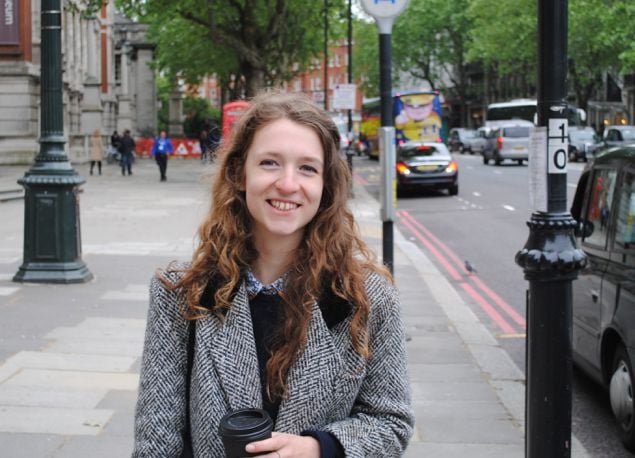What is your favorite travel memory?

It’s almost impossible to choose from! A good place to start would be my own trip as a student on Art History Abroad. I had seen a reproduction of a fresco in England, and hadn’t thought much of it.
In Florence, we were taken to the San Marco monastery, a Renaissance building filled with frescoes. As we walked up the staircase that had been trodden on for centuries by Dominican monks, we turned a corner and I saw the most beautiful thing I had ever seen. It was the fresco I had seen a reproduction of!
Seeing it in the flesh, everything changed. Then I realized how important it is to actually stand in front of the object itself. I actually burst into tears, because I thought the fresco was so breathtakingly beautiful. It’s now my job to give students that same experience – of literally being blow away by a piece of art.
How have you changed/grown since working for your current company?
The beautiful thing about Art History Abroad is that you never stop learning. As all the tutors live and breathe what they do, the conversations are constantly demanding you to rethink what you know.
There is never a finished session; always more to add, always more to question.
Art History Abroad has fostered an incredibly supportive and collaborative environment, which means the tutors aren’t simply colleagues, but great friends as well.
What makes your company unique? When were you especially proud of your team?
What makes Art History Abroad so unique, for me, are two things. The first is that it is the absolute opposite of a classroom environment. As we teach in front of art works, often in the location and city that they were intended, everything comes alive. It isn’t simply about relaying facts, rather about engaging with the past.
An example – this summer my group went to St. Mark’s in Venice, which we had booked out just for them. The students were taught whilst they lay on their backs, looking up at the ceiling. As a surprise, to show the acoustics, another tutor – who is also a professional singer – sang to the students. It was a thrilling moment.
The second thing is the total trust in the ability of the tutors. This means that if a tutor has something special to show the students, maps and schedules can be abandoned for the sake of showing something totally off the beaten track. Art History Abroad allows tutors to develop their own interests, rather than demand they stick simply to a staid formula.
What do you believe to be the biggest factor in being a successful company?
Not being scared to do something different. It’s not just about going to a tourist site; it’s about discovering new worlds, and letting those experiences broaden the whole way you understand your world.
Art History Abroad is so successful because it nurtures the individual. Its small teaching groups mean that genuinely meaningful relationships can be created: the student is not lost as a number amongst a crowd, but encouraged to develop their own opinions, and crucially given the confidence to express these opinions.